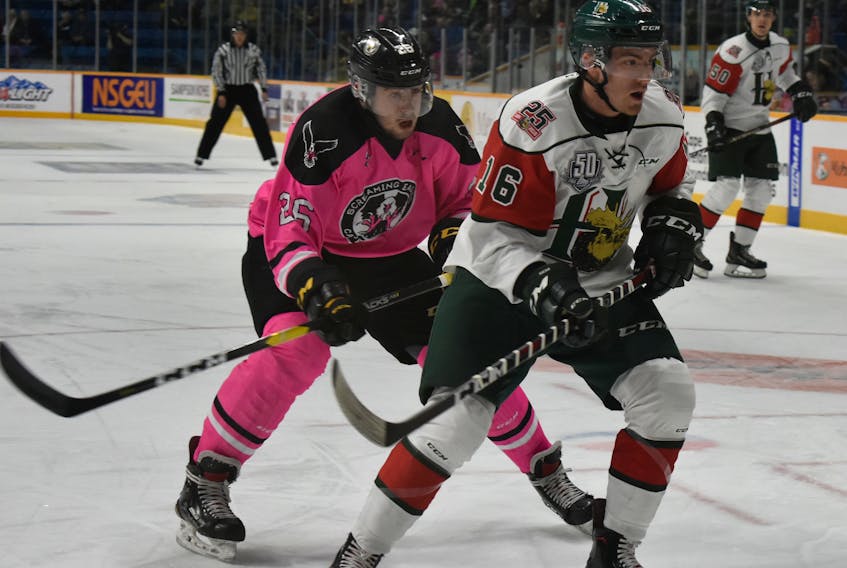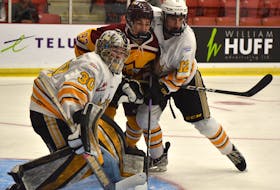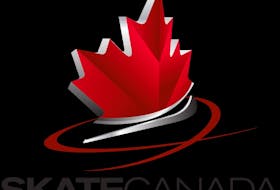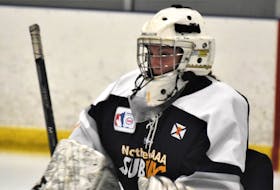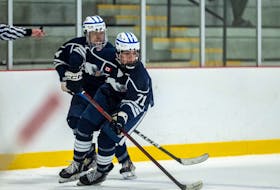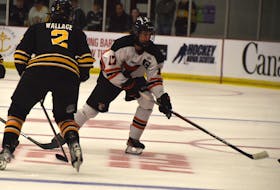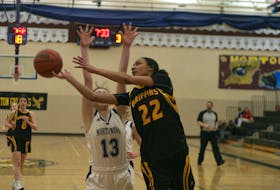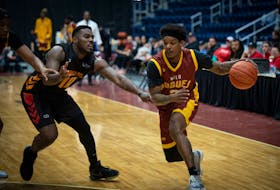Not much the QMJHL has done to attract American players has ever really worked.
Kids from the Eastern U.S. dream of playing NCAA hockey, not major junior. It’s the same as how young players from around Halifax with big ambitions almost all set the Mooseheads or the Q as their target. It just comes down to what kids know growing up, whether it’s here or in New England.
And that’s not to say there aren’t exceptions both ways. Guys like Shane Bowers (Boston University), Peter Dilaberatore (Quinnipiac University), Morgan Barron (Cornell University) and Ethan Phillips (Boston University) are just some of the more recent examples of locals who were drafted into the NHL after taking the NCAA route, just like Jake Ryczek from Massachusetts went pro last year after suiting up for the Mooseheads.
But the bottom line is the Quebec league would love to increase its numbers of U.S. players. However, is it possible there could be a unique bump this year because of a perfect storm of circumstances?
I’m getting reports back from more teams than usual that some of the Americans they drafted are legitimately considering major junior over the NCAA and it feels, at least in part, like it’s because of the uncertainty around the COVID-19 crisis.
Here in the Maritimes where six of the QMJHL’s 18 teams are based, the virus is almost gone. In Quebec, many of the regions outside of the major city centres are close to being COVID-free as well, if not already completely free. There are only three Q franchises in big markets in that province - the Blainville-Boisbriand Armada, Quebec Remparts and Gatineau Olympics - so that is another consideration.
Also in Quebec, premier Francois Legault recently made some fairly strong remarks about reintroducing youth team sports because some of the science suggests it could be relatively low risk. Let’s remember that more than 90 per cent of the players in the Q are teenagers.
All of those factors are probably why QMJHL commissioner Gilles Courteau felt confident announcing his goal a couple of weeks ago of getting the league back in operation by Oct. 1, which is pretty close to when the season usually opens anyway.
Now I’m not here to say that is a guaranteed start date or even that I don’t have a healthy amount of pessimism for that target. There are significant wrinkles to iron out like travel restrictions and social distancing, but it sure is a much more hopeful outlook than where things stand in the U.S.
South of the border, the coronavirus seems poised to make an aggressive comeback and that’s not even taking into account the devastating numbers already. Consider these figures: the United States has four per cent of the world’s population but 27 per cent of the world’s COVID-19 deaths. That is some grim math that might have more teenaged hockey players than usual looking to Canada, not to mention their parents.
For starters, two Maritime players who were on the NCAA path just changed their minds and reported to the Q. New Brunswick’s Peter Reynolds and Cam MacDonald of Hammonds Plains are both projected to be picked in the second round of the 2021 NHL draft by independent scouting service Red Line Report but dropped their commitments to American colleges to join the Saint John Sea Dogs, who gambled on them in the 2019 QMJHL draft.
“(COVID-19) came up a little bit when we talked to them but both of them said it was mostly about our team being in a good position to maybe win championships in the next couple of years,” Saint John general manager Trevor Georgie said. “Peter was going to be going back to play in (British Columbia) this year so I think the travel, even across provincial borders, must have been something he thought about. So I’d say it’s not that it didn’t play a part for the two of them but I couldn’t tell you how much of a part it played. It definitely played some part.”
Georgie also seemed confident the two players he picked in the American draft would report and Mooseheads GM Cam Russell went four-for-four on training camp commitments from the U.S. kids he picked this year. That is unprecedented.
“I think we’ve worked hard at it,” Russell said. “We take care of the kids and we do things right, as do a lot of other teams. I just think nowadays kids are looking at lots of different options. I don’t know if the COVID situation has come into play for some kids; I’m sure it has for some, just like I’m sure it has for some kids thinking about going the other way. I think a lot of them are going to be staying home and playing major.”

